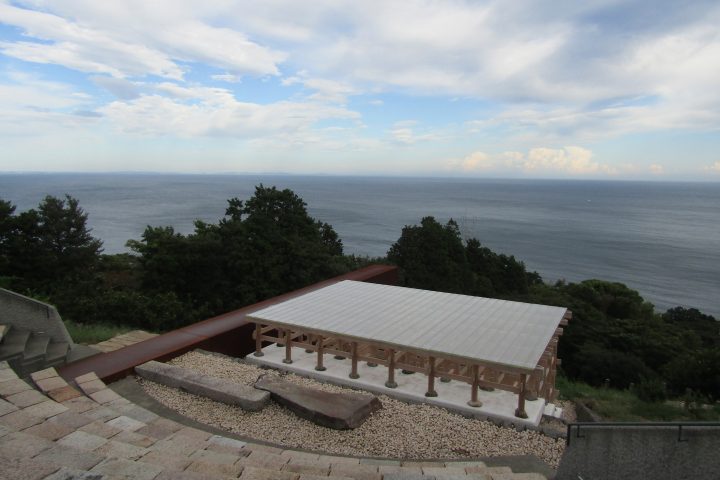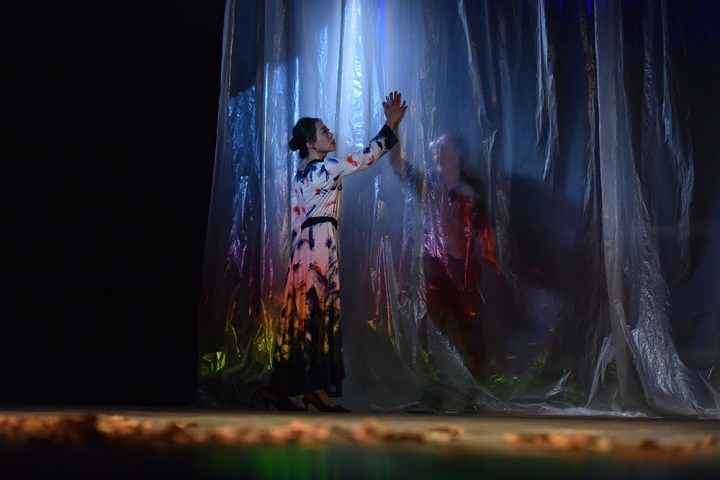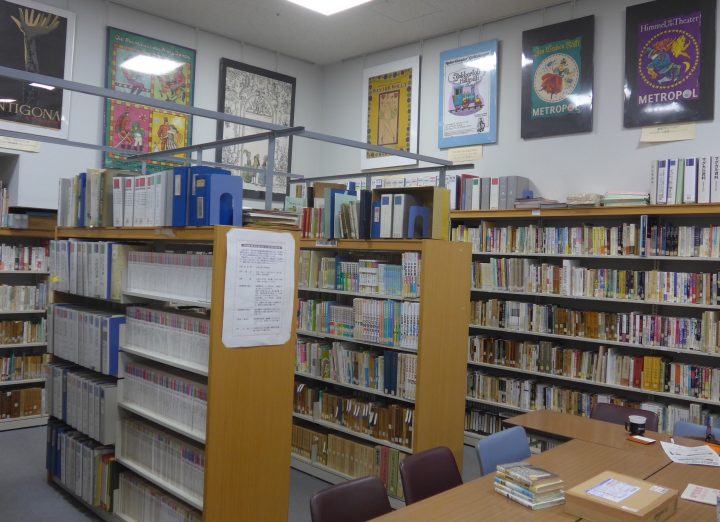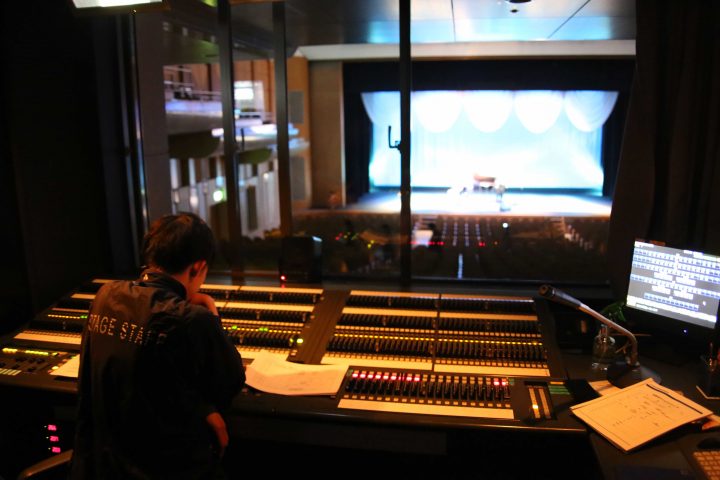Magcal Report "TPAM Direction Program 2015/Tan Fu Kuen Direction"
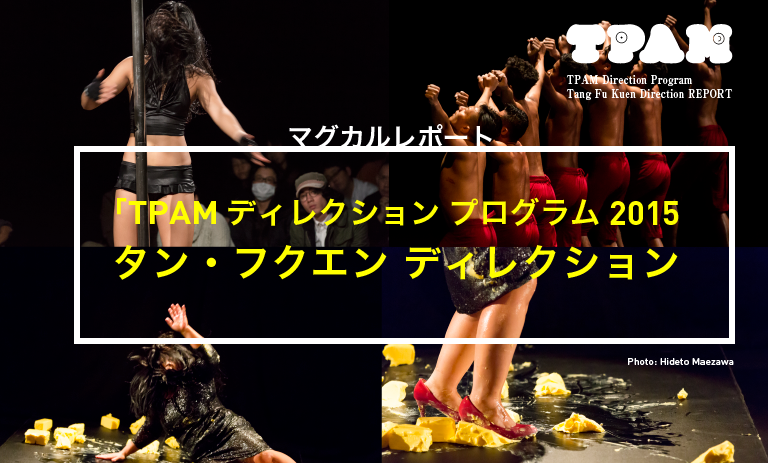
<Profile of Tang Fu Kuen>
An independent cultural worker active in the field of contemporary performing arts and visual arts, based in Bangkok, he has undertaken numerous projects across Asia and Europe. He was the sole curator of the Singapore Pavilion at the 53rd Venice Biennale and has worked with Singapore Arts Festival, Indonesian Dance Festival, In Transit Festival (Berlin), Bangkok Fringe Festival and Colombo Dance Platform (Sri Lanka).
Issa Hoxson
"Death of the Pole Dancer"
@KAAT Kanagawa Arts Theatre Small Studio
This is a performance by Aisa Hokson, who studied art and ballet and won a pole dancing competition held in Manila in 2010.
Upon entering the venue, the audience sat on the floor around a support pole where the pole would be placed, waiting for her to appear.
As time passed, Aisa slowly assembled the pole in a quiet space, one by one. During that time, there was no music in the venue, and the scene looked like a ritual, sublime, and it seemed to strongly appeal to the audience that "this performance is not just pole dancing". After assembling, Aisa continued to violently slam her body against the pole. She occasionally jumped from one to the other, showing off her incredible physical ability (the image of pole dancing), but unlike the "seductive" image of pole dancing (that's what I thought), her approach seemed to be an expression of anger at the prejudiced image of pole dancing itself, or a strong message that took advantage of her feminine image. Pole dancing is also recognized as an exercise and performing art, and specialized schools have been opened, and it is apparently sometimes performed locally at funerals and other events in Taiwan to send off the dead. Where on earth did the image I have come up with come from... It was a night that made me think about many things.
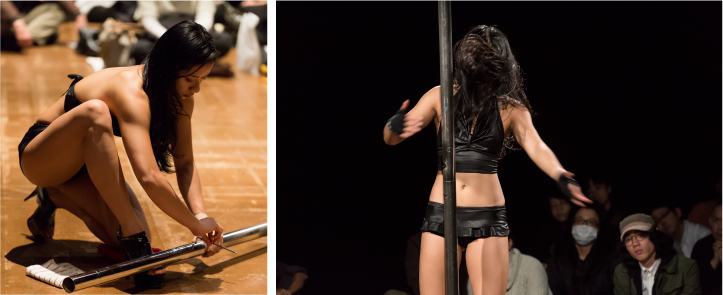
Aisa Hokson, "Death of the Pole Dancer" TPAM2015/Photo: Hideto Maezawa
Murati Suryodarmo
BORROW + EXERGIE – butter dance
@BankART Studio NYK NYK Hall
Murati Surjodarmo's performance is highly acclaimed in the field of contemporary art. Butter Dance, as the name suggests, is a performance that uses butter. Murati wore a dress and high heels, a costume that is not suitable for butter, on a large block of butter, and fell violently, showing us her unpredictable body movements. However, the butter dance was only performed at the end of the performance, and Murati began by explaining to us the reason why she started dancing 15 years ago before performing the butter dance. Murati was raised by parents who were dancers, and studied under Anzu Furukawa and Marina Abramovic, acquiring various ideas and physical memories. While speaking, Murati showed us fragments of her memories through her body, and the breadth of her movements, which ranged from traditional Javanese dance to Butoh, was astonishing. After expressing various physical memories, she finally stood on the butter and performed the butter dance as mentioned above. Throughout the performance, I felt that this was the final measure taken by her, who has learned and mastered many different things, to isolate all of the thoughts and physical memories that reside in her body.

Murati Suryodarmo "BORROW + EXERGIE – butter dance" TPAM2015 / Photo: Hideto Maezawa
*The video is not from TPAM2015.
Eko Supriyanto
"Cry Jailolo"
@KAAT Kanagawa Arts Theatre Hall
Eko Supriyanto is an artist who has long been working on re-examining traditional dance and contemporary dance from Java, Indonesia. At this year's TPAM, he presented "Cry Jailolo," inspired by the traditional dance "Legu Sarai" from Jailolo, West Halmahera Island, North Maluku Province, eastern Indonesia. A small "hitahita" sound reverberated softly from the darkened stage to every corner of the venue. It was a sound like water and very pleasant, and when the whole picture finally came into view, I realized that it was the sound of small steps stomping on the ground (the stage floor). It was impossible to determine how much of their dance was traditional dance and how much was an arranged movement, but the dance, which was composed of marching arm movements and steps, was very simple, but I was captivated by the richness of expression that made me feel many stories, such as prayers for the sea, anger at destruction, and sometimes scenes of rowing a boat. (The text says that "Cry Jailolo" expresses the hope that the destruction of the coral in the Jailolo Sea will be stopped and that it will return to its original state.) Music was also used in the performance, and the sound of their steps stomping on the floor was very impressive from beginning to end. The sound of their steps, sometimes quietly and sometimes forcefully, was in sync with the movements of their bodies such as the swinging of their arms, and seemed to be an important part of conveying the story of these prayers to us.

Eko Supriyanto "Cry Jailolo" TPAM2015/Photo: Hideto Maezawa
Above, I have reported on three performances directed by Tang Fu Kuen. It seemed to me that there were many works that directly addressed the traditions and possibilities of Asia, as well as works that made us think about the images (ideas) that we have inside of us from a new perspective. I wonder what kind of works from an Asian perspective will appear at TPAM 2016 next year, following this year's. I would definitely like to enjoy Tang Fu Kuen's direction again next year!
